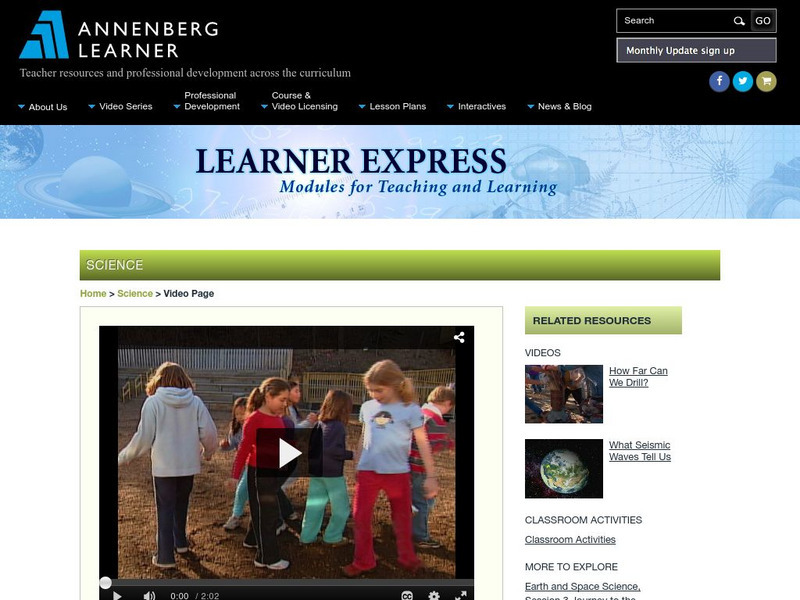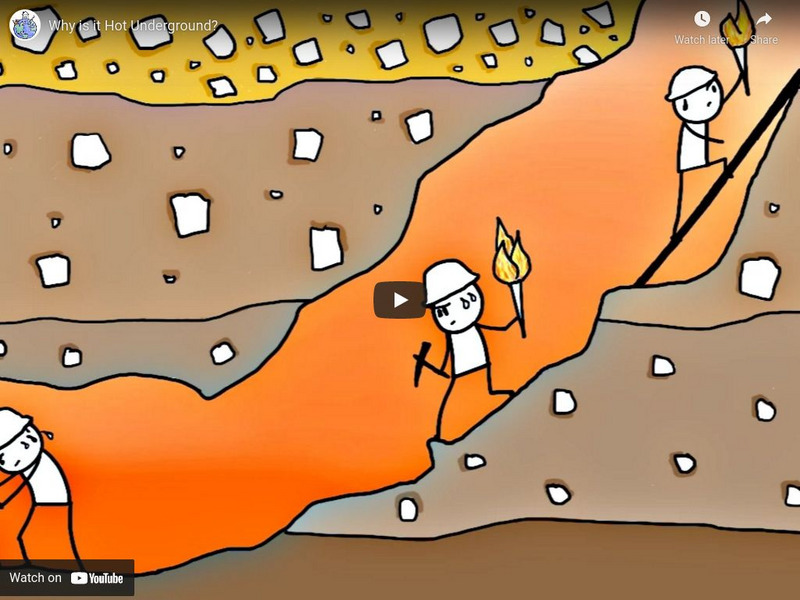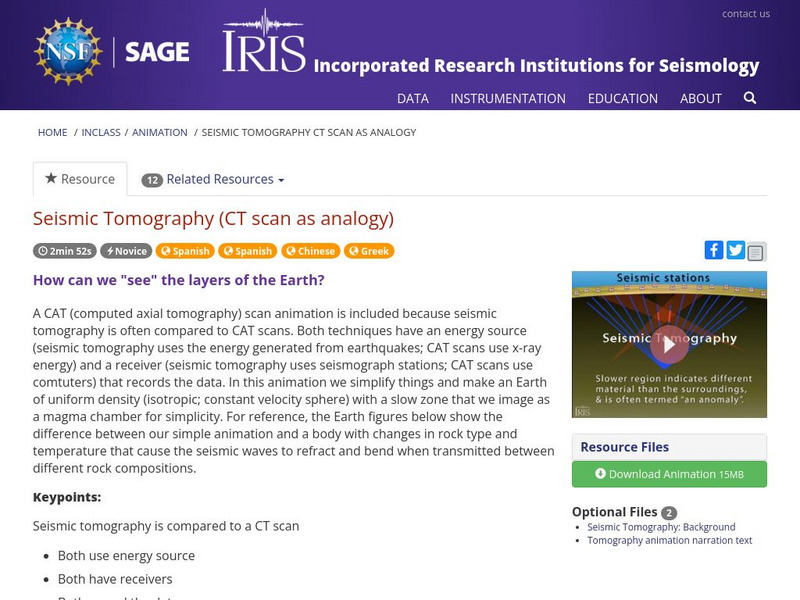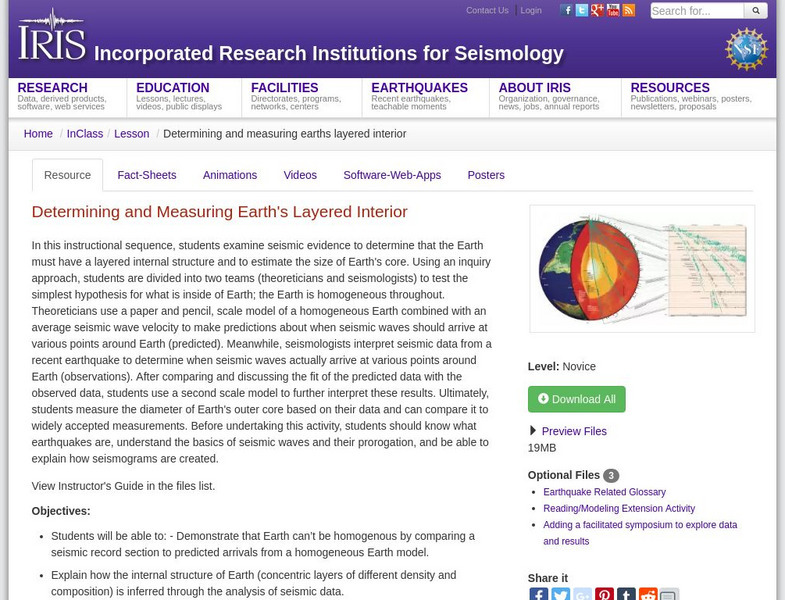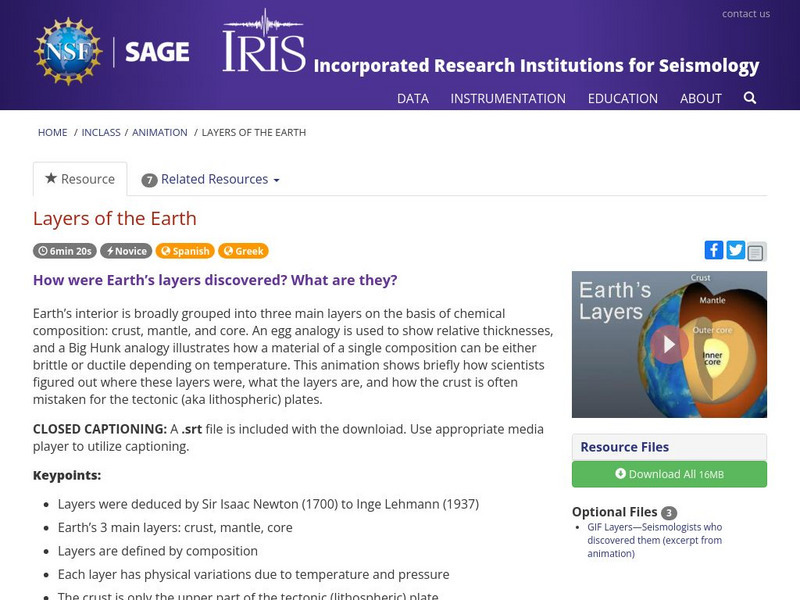Hi, what do you want to do?
Next Animation Studio
Scientists estimate there are a quadrillion tons of diamond below Earth's surface
A new study from MIT suggests the interior of Earth is "filled with a quadrillion tons of diamonds."
Next Animation Studio
Earth's interior taking in more seawater than previous thought, study finds
Seismic activity around the Mariana Trench have revealed the earth around it could be taking in at least 4.3 times more water than previously thought
Annenberg Foundation
Annenberg Learner:an Analogy for the Effects of Temperature and Pressure on Rock
A video exploring the relationship between temperature and pressure that control the state of rocks inside the Earth. [2:02]
Annenberg Foundation
Annenberg Learner: How Far Can We Drill?
During this video, learn how the temperature and pressure found in the interior of the Earth can present obstacles for drilling into the Earth. [2:29]
Annenberg Foundation
Annenberg Learner: Seismic Wave Tells Us About the Different Layers of the Earth
This video explores how scientists learn about Earth's interior by using sound waves produced either by earthquakes or geological equipment. [4:12]
Smithsonian Institution
National Museum of Natural History: Qrius: Volcano Geochemistry Windows to Earth's Interior
Geologist Dr. Elizabeth Cottrell, describes why she considers volcanoes "lungs of the earth" in this webcast. [29:15]
Incorporated Research Institutions for Seismology
Iris: Seismic Tomography (Ct Scan as Analogy)
How do scientists look at the layers of the Earth? They have the seismic version of a CT scan, of course. Understand this process with the help of the video. [2:52]
Science for Kids
Science Kids: Chemistry Videos: Introduction to Rocks and Minerals
Check out a simple video that illustrates the Earth's rocks and minerals. [3:34]
Minute Earth
Minute Earth: Why Is It Hot Underground?
Have you ever wondered why there is so much heat inside the Earth? Watch this short tutorial to find out. [2:47]
Other
Earth's Story Journey to the Center of the Earth Full
Earth's Story Journey to the Center Of the Earth HD Full DocumentaryWhat drives the tectonic plates as they glide over the Earth's surface? Scientists have probed our planet to its core. In this realm of unimaginably high temperatures...
National Science Foundation
National Science Foundation: New Models to Explore Earth's Interior
NSF-funded researchers at Arizona State University have developed new simulations depicting the dynamics of deep earth. [0:30]
Khan Academy
Khan Academy: How We Know About the Earth's Core
Find out how S-wave shadow and P-wave detection patterns give us information about the Earth's core. [5:49]
Khan Academy
Khan Academy: The Mohorovicic Seismic Discontinuity
A video lecture discussing the Mohorovicic Seismic Discontinuity which is the boundary between crust and mantle. [6:13]
Incorporated Research Institutions for Seismology
Iris: Seismic Tomography (Ct Scan as Analogy)
How can we see the layers of the Earth? A CAT (computed axial tomography) scan animation is included because seismic tomography is often compared to CAT scans. [2:34]
Incorporated Research Institutions for Seismology
Iris: Determining and Measuring Earth's Layered Interior
In this instructional sequence, students examine seismic evidence to determine that the Earth must have a layered internal structure and to estimate the size of Earth's core.
Incorporated Research Institutions for Seismology
Iris: Layers of the Earth
Earth's interior is broadly grouped into three main layers on the basis of chemical composition: crust, mantle, and core. An egg analogy is used to show relative thicknesses, and a Big Hunk analogy illustrates how a material of a single...






